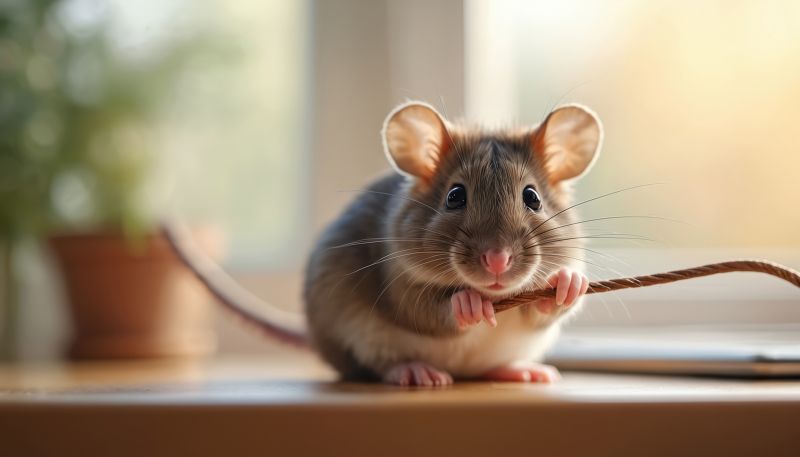Expert Picks for Reliable Rat Fumigation Products You Can Count On
Choose from trusted products recommended by pest control experts to effectively manage rat issues.
 Products for rat fumigations are essential tools for managing rodent infestations in various settings, including residential, commercial, and agricultural environments. These products are designed to deliver targeted treatment to eliminate rats and prevent future infestations. They come in a variety of forms, such as fumigation chambers, aerosol sprays, and gas cartridges, each suited to different scenarios and levels of infestation. Proper selection and application of these products can help ensure safety and effectiveness while addressing rodent problems efficiently.
Products for rat fumigations are essential tools for managing rodent infestations in various settings, including residential, commercial, and agricultural environments. These products are designed to deliver targeted treatment to eliminate rats and prevent future infestations. They come in a variety of forms, such as fumigation chambers, aerosol sprays, and gas cartridges, each suited to different scenarios and levels of infestation. Proper selection and application of these products can help ensure safety and effectiveness while addressing rodent problems efficiently.
Top Overall Option
Enclosed Fumigation Chamber
An enclosed fumigation chamber provides a controlled environment for treating infested areas. It allows for precise application of fumigants, minimizing risks to humans and pets while effectively targeting hidden rat nests. This versatile product is suitable for use in storage facilities, attics, and basements, offering a comprehensive solution for rodent management.
Types of Products For Rat Fumigations
Aerosol Fumigation Sprays
Portable and easy to use, aerosol sprays deliver targeted chemical agents to infested areas, suitable for quick treatments in confined spaces.
Gas Cartridge Fumigants
These cartridges release fumigant gases when ignited, ideal for larger enclosed spaces and for treating extensive rodent habitats.
Fumigation Chambers
Enclosed chambers allow for controlled fumigation of items or spaces, reducing chemical exposure risks during treatment.
Foam Fumigants
Foam formulations expand within cavities and cracks, reaching hidden rat nests and entry points effectively.
Powder Fumigants
Powder-based products can be applied directly into burrows and holes, providing a persistent barrier against rodents.
Liquid Fumigants
Liquid formulations are suitable for spot treatments and can be applied with sprayers or other dispensing tools.
Bait Stations with Fumigant
Integrated bait stations with fumigant release mechanisms offer a dual approach to rodent control, combining baiting with fumigation.
Smoke Fumigants
Produced by special devices, smoke fumigants fill enclosed spaces and can reach inaccessible areas where rats hide.
Electrostatic Fumigation Devices
These devices generate charged particles that disperse fumigants evenly throughout the treated space, ensuring comprehensive coverage.
Thermal Fumigation Systems
Utilizing heat to activate fumigants, these systems are suitable for large storage areas and warehouses.
Residual Chemical Sprays
Applied to surfaces and entry points, residual sprays provide ongoing protection against rat entry and nesting.
Popular Choices
Convenient for quick spot treatments, these sprays are commonly used by homeowners and pest control professionals.
Favored for their effectiveness in enclosed spaces, these cartridges are a popular choice for larger infestations.
Ideal for treating stored items or small spaces, offering a contained environment for fumigation.
Effective in sealing cracks and entry points, foam fumigants are trending for their ability to reach hidden nests.
Popular for their ease of application directly into burrows and holes, providing targeted control.
Used frequently for spot treatments, these liquids are versatile and easy to apply.
Combining bait and fumigation, these stations are increasingly favored for comprehensive control.
Popular in large storage areas, smoke devices fill spaces quickly and efficiently.
Gaining popularity for their even distribution of fumigants, especially in complex spaces.
Widely used for ongoing protection, residual sprays are a common choice among pest control providers.
Fumigation products typically involve the release of chemical agents that permeate enclosed spaces, reaching hidden nests and burrows where rats tend to hide. Some products are formulated for use in confined areas like attics, basements, or storage units, while others are designed for larger open spaces. It is important to carefully read and follow the manufacturer's instructions to minimize risks and maximize the efficacy of the treatment. Using the right type of product for the specific environment and infestation level can make a significant difference in achieving desired results.
When considering rat fumigation products, safety is paramount. Proper protective gear, adequate ventilation, and adherence to safety guidelines are essential to protect occupants and handlers from potential chemical exposure. Additionally, selecting products that are appropriate for the size of the area and the severity of the infestation can help prevent overuse or underperformance. Regular inspection and maintenance of treated areas are also recommended to ensure long-term control and to identify any recurring issues promptly.
Overall, the market offers a broad spectrum of products tailored to different needs and preferences. Whether dealing with a small nuisance or a large infestation, understanding the options available can help in making informed decisions. Combining these products with good sanitation practices and exclusion techniques can significantly improve the success rate of rodent control efforts.
Key Buying Considerations
- Type of infestation and severity to determine suitable product strength and form
- Size and layout of the treatment area to select appropriate product capacity and coverage
- Safety features and instructions to ensure proper handling and application
- Compatibility with the environment, including ventilation and occupancy status during treatment
- Ease of use and application method to fit user experience and needs
- Chemical formulation and potential toxicity to humans and pets
- Duration of residual effect and need for reapplication
- Regulatory compliance and product approvals for safety and efficacy
- Availability of protective equipment and safety gear recommended during use
- Storage and shelf life considerations for maintaining product effectiveness
- Cost and value relative to the size of the infestation and area
- Customer reviews and feedback for insights into real-world performance
- Availability of technical support or guidance from manufacturers
- Environmental conditions that may affect product performance, such as humidity or temperature
- Compatibility with integrated pest management strategies
